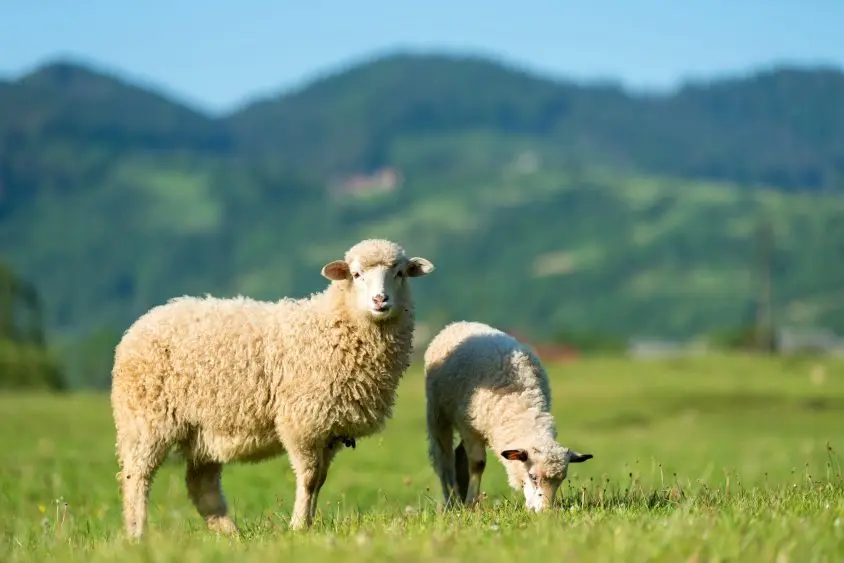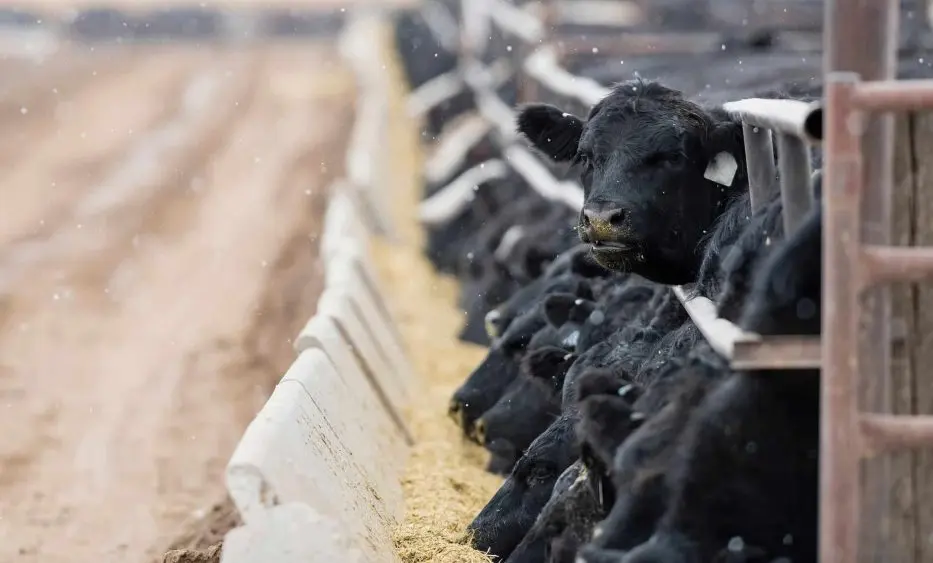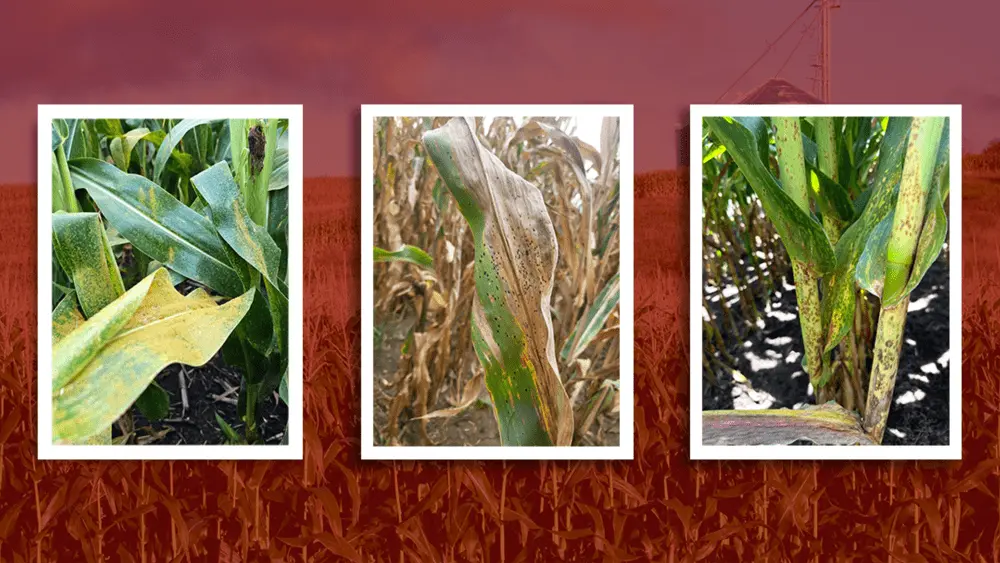
By Tamra Jackson-Ziems – Extension Plant Pathologist
Diseases are common and severe in some Nebraska corn fields this year. The sustained high relative humidity, abundant rainfall in some areas, and warm temperatures have been very favorable for numerous pathogens – especially fungi and some bacteria. Some parts of the state have or are experiencing record levels of southern rust (again). With cooler weather just around the corner, we should see southern rust slow, but tar spot could become more active, bringing more questions about what to expect in Nebraska corn fields.
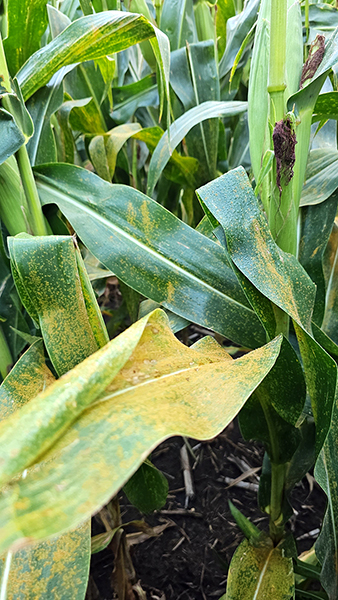
With the rapid increase in southern rust (Figure 1) in some fields lately, many are considering late fungicide applications, and sometimes second applications. However, based on the collective body of university data reported by the Crop Protection Network, fungicide applications are generally not recommended for corn in the dent (R5) stage because of the decreased probability of economic return — this is particularly true for second applications (Table 1). Historically, late-season fungicide applications have occasionally led to a yield increase in field experiments under more extreme conditions, such as in susceptible, late-planted corn under heavy disease pressure, as shown in Figure 2.
| Crop Stage When Southern Rust is First dDetected | Possible Benefits from Spraying | Comment |
| Vegetative | Not likely to find southern rust at this stage unless corn is planted very late for the region | Scout fields for disease |
| VT (tasseling) | Yes | May need a second spray |
| R1 (silking) | Yes | May need a second spray |
| R2 (blister) | Yes | Less likely to need a second spray |
| R3 (milk) | Yes | No second spray needed |
| R4 (dough) | Maybe, with severe disease pressure | No second spray needed |
| R5 (dent) | Unlikely | No second spray needed |
| R6 (black layer) | No |
Given that the window of protection provided by most contemporary foliar fungicides is about three weeks, if a second fungicide treatment is needed, it should be made three weeks following the first application to provide maximum benefits. Second applications are less likely to provide an economic return except in the case of heavy disease pressure.

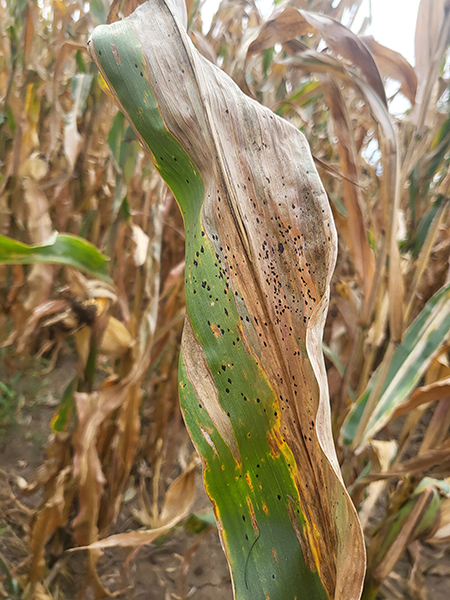
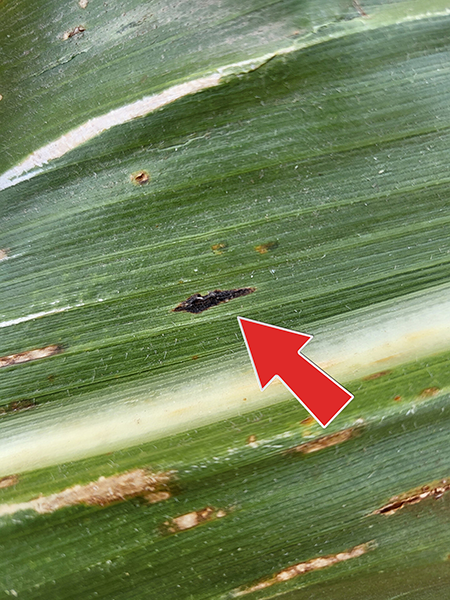
Black Spots
Changing weather conditions over the next several days may bring some relief from southern rust in parts of Nebraska, but cooler temperatures will likely favor more tar spot development and spread. Late during the crop season, it is also common for the rust fungi (causing both southern rust and common rust) to begin producing black pigmented teliospores instead of the more common and recognizable orange/tan urediniospores (visible in Figure 1). Teliospores are produced on or near the old rust pustules and often in a ring or horseshoe shape around it (Figure 3). Their proximity to old rust pustules and shape are the best ways to differentiate them from the black stromata produced by the tar spot fungus, which are more pointed or diamond-shaped as they grow larger. Also, mature tar spot stromata should also have evidence of a black structure visible on both the upper and lower surfaces of the leaf.
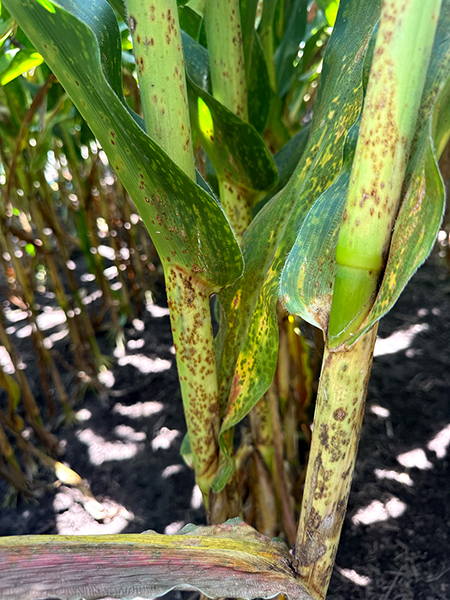
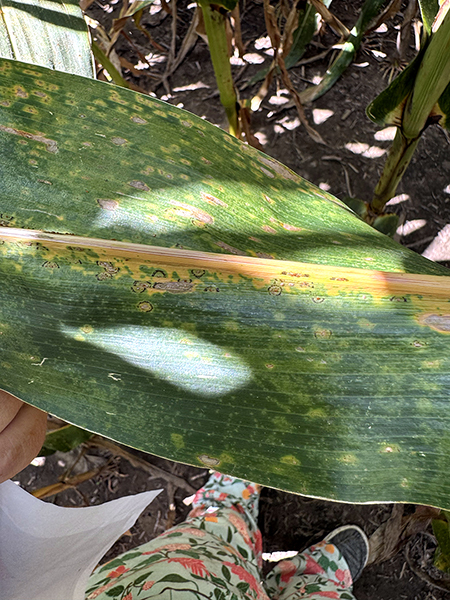
Increased Risk for Stalk Rot Diseases and Stalk Lodging
There are several scenarios that could increase the risk for stalk rot diseases and lodging this year in some Nebraska corn fields. Development of substantial leaf diseases can inhibit plants’ ability to fill grain and lead to stalk cannibalization, which hollows out the stalk and weakens it.
Nutrient imbalances — such as nitrogen deficiencies that develop after heavy rainfall — leech nitrogen and can also lead to weakened stalks and several other crop stresses.
You can evaluate the risk for stalk lodging in each field by using a “push or pinch” test of >100 plants from different parts of the field and calculating the percent of those that lodge below the ear or are easily crushed by hand (in the lower internodes).
Prioritizing harvest of more vulnerable fields to be harvested first or earlier than normal if they have more than >10% of plants with weakened stalks can reduce harvest losses due to lodging later.
For More Information
If you see symptoms that look like tar spot on corn — especially in one of the counties where the disease hasn’t been confirmed in disease distribution maps — please reach out to someone in Nebraska Extension or send samples to the UNL Plant and Pest Diagnostic Clinic.
The tar spot fungus will continue to overwinter in Nebraska corn fields and disease will redevelop and continue to spread. Most fields have very minor disease with no impact on yield. Eventually, as the fungal inoculum builds in corn fields over time and disease becomes more severe, it may become a threat to yield in more areas and require active disease management to minimize and prevent economic losses to producers. Thus, it is important that we continue to monitor spread of the pathogen to new areas of the state so that local producers and those in the ag industry can be alerted.
Please see CropWatch and the Crop Protection Network for more information.
Submit samples to the UNL Plant and Pest Diagnostic Clinic and enclose a completed sample submission form.
